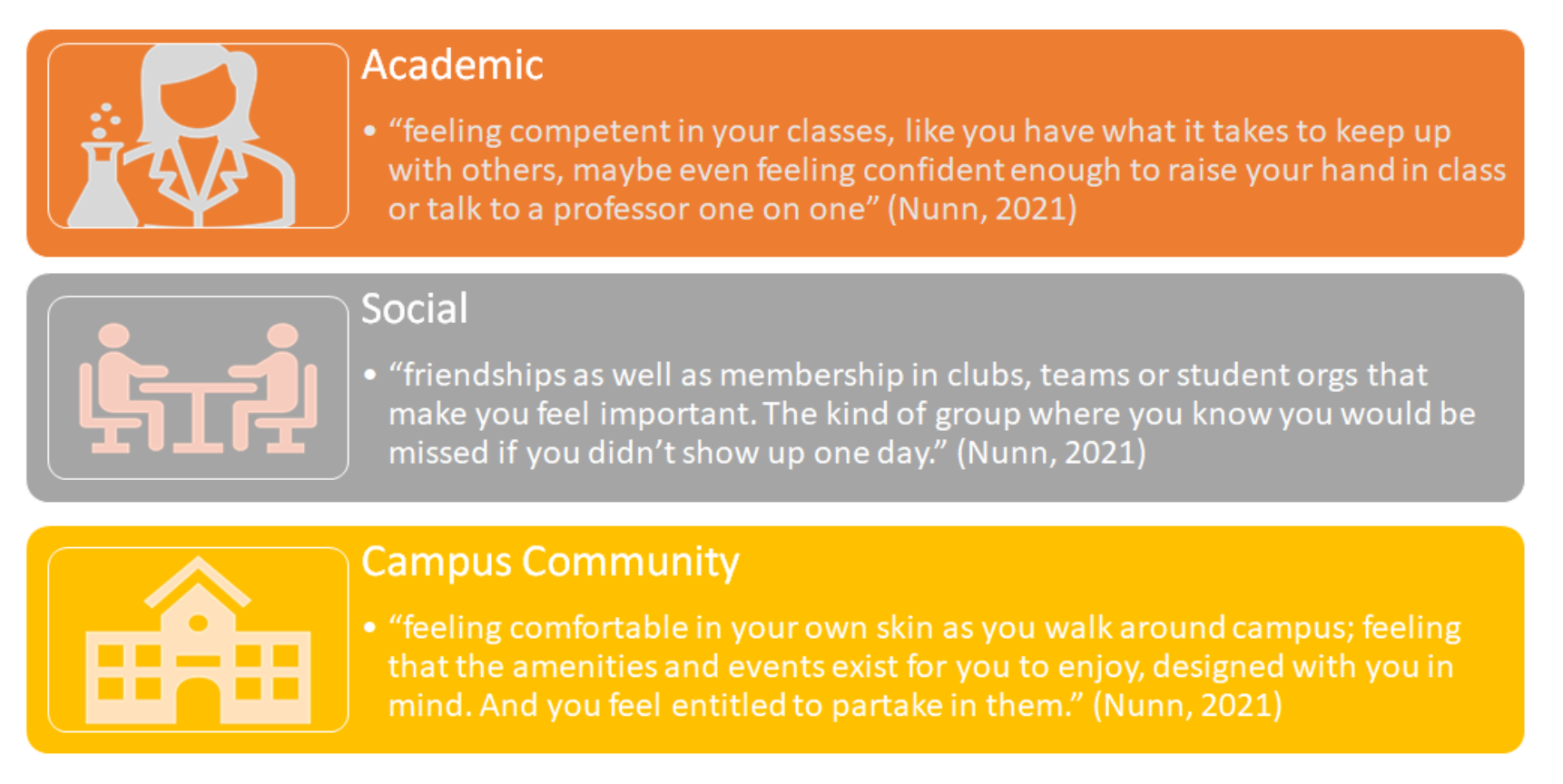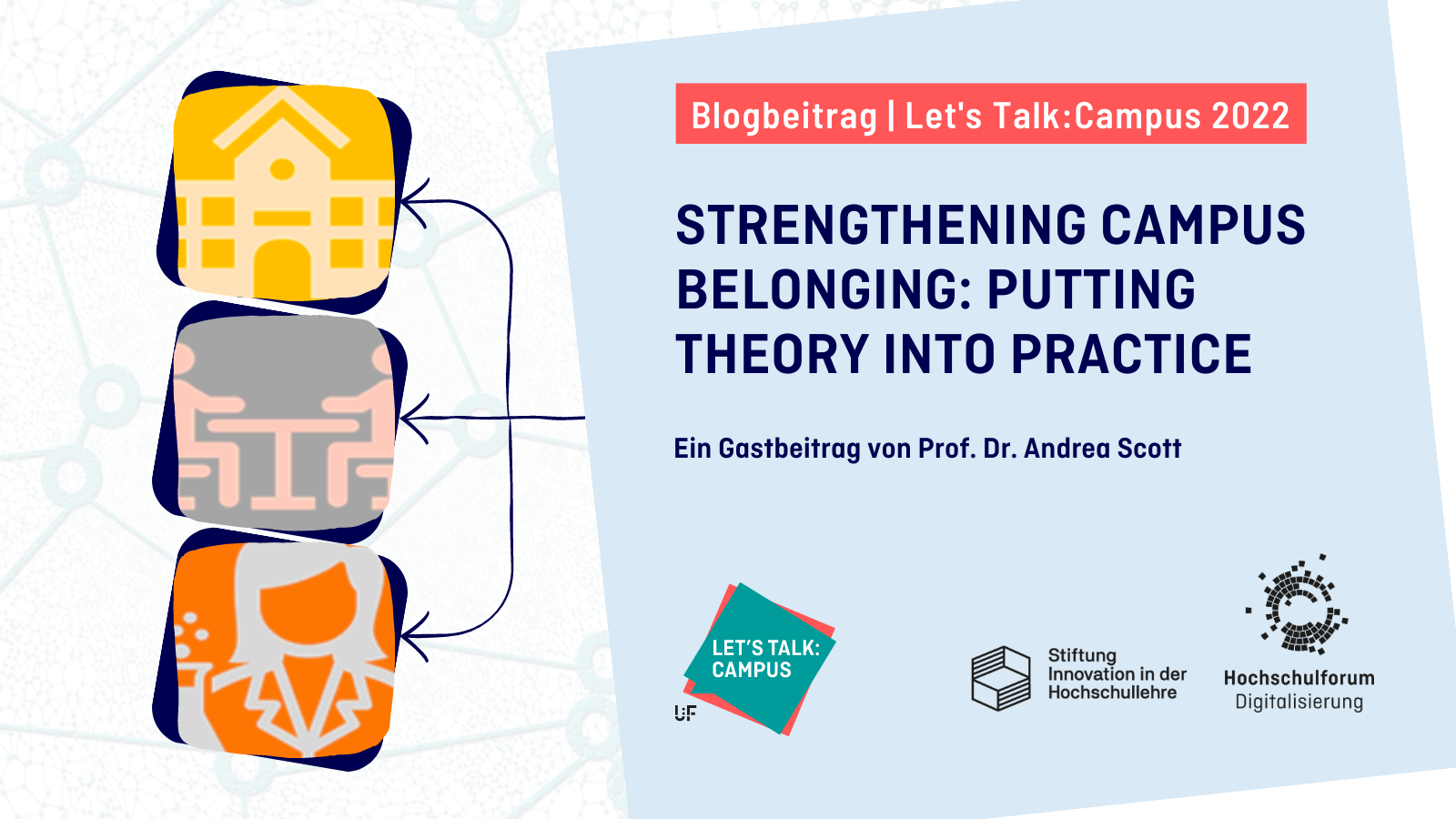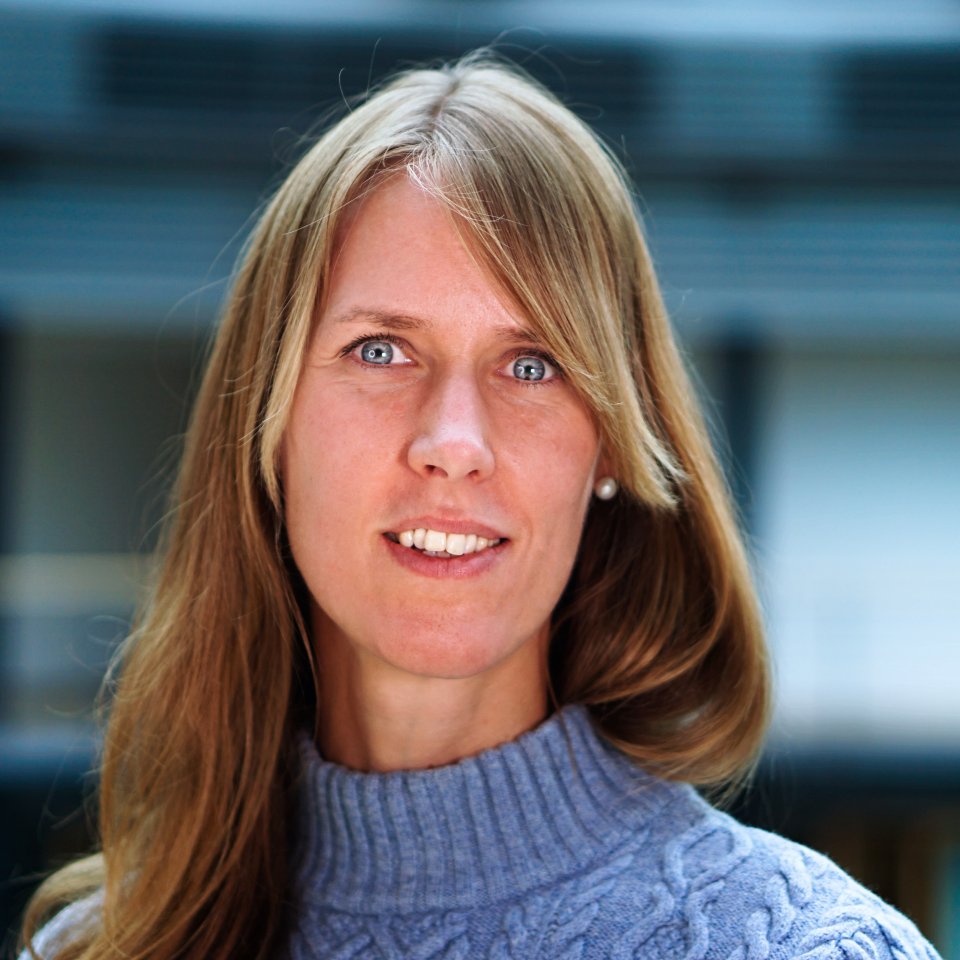Strengthening Campus Belonging: Putting Theory into Practice
Strengthening Campus Belonging: Putting Theory into Practice
20.02.23
Um das Campus-Zugehörigkeitsgefühl von Studierenden zu stärken, ist Wertschätzung wichtig: Bestätigung von anderen zu erhalten, ist entscheidend für den akademischen Erfolg, so Prof. Dr. Andrea Scott von der Europa-Universität Viadrina Frankfurt (Oder). Außerdem helfe es, sich gesehen, geschätzt und einbezogen zu fühlen – dies gelte insbesondere für das Zugehörigkeitsgefühl von Studierenden, die Kinder von Eingewanderten sind. Scott selbst studierte in den USA. Im Vergleich sei die Campuskultur in Deutschland zurückhaltender und das Zügehörigkeitsgefühl der Studierenden weniger ausgeprägt. An der Europa-Universität Viadrina wird deshalb aktuell der Train-the-Trainer-Ansatz am Zentrum für Lehren und Lernen erprobt. Dadurch soll das Zugehörigkeitsgefühl auf allen institutionellen Ebenen der Hochschule gestärkt werden. In Small Teaching Workshops für Lehrende und Studierende sollen Handlungsmaßnahmen für mehr Zugehörigkeit in den Bereichen „Akademisches“, „Soziales“ und „Campus“ entwickelt werden. Dieser (auf Englisch verfasste) Gastbeitrag im Rahmen unserer Let’s-Talk-Campus-Blogreihe stellt das Projekt vor.
 I would like to start with a thought experiment for faculty, administrators, and students.
I would like to start with a thought experiment for faculty, administrators, and students.
- Reflect on a moment in your studies when you felt genuinely valued. What happened in this interaction? Why was it so valuable to your academic or professional development?
And now, zooming out to your present self….
- What do you do in your classroom (faculty), your center or department (administrators), or your student organization (students) to actively cultivate a sense of belonging among students?
I begin with these questions for two reasons. First, receiving validation from others is critical to academic success. It helps us feel seen, appreciated, and included, and is particularly important to the academic trajectories of working-class and first-generation university students. Second, the feeling of institutional belonging isn’t passively received or individually acquired: it happens in a social context. As agents within our institutions, we all have a role to play in acting inclusively.
But what might that look like? And why should such actions be the focus of our attention now?
I come to these questions as a tenured scholar-teacher-administrator, who recently moved to Germany, but whose academic and professional training is in the United States. Since my family is multilingual and multicultural, I see things, including university cultures, through multiple lenses. German university culture, as I have observed it, is sometimes so steeped in concepts of self-efficacy that concepts of belonging, and active institutional support needed to support it, can seem tabu—like a form of overreach or even coddling. This view misses how “chilly” and actively exclusionary college campuses can be for minoritized students, faculty, and staff. If a participatory education is to be more than a buzzword of higher education, thinking carefully about how we welcome and include students on our campuses is critical to our missions.
Research from the scholarship of teaching and learning—and the sociology of education—emphasizes the need to cultivate belonging on university campuses, particularly for first-generation and other minoritized students (Kezar & Maxey, 2014, p. 31; Nunn, 2019). A relationship-rich education correlates positively with student success (Astin, 1977; Mayhew et al., 2016; Strayhorn, 2019; Tinto, 1987). Students come to our campuses—and they stay and thrive—when there are many opportunities to connect meaningfully with faculty, staff, and peers within a culture of high expectations and high support (Felten & Lambert, 2020). There is now a consensus in the literature that it’s not enough to simply encourage students to take responsibility for their own educations; institutions play an active role in shaping salient forms of belonging (Bensimon, 2007; Brown McNair et al., 2020; Nunn, 2021).
What role should universities play in fostering inclusivity on campuses of the future? And given the resource-intensive nature of this work, how can universities cultivate forms of belonging in sustainable ways?
In my presentation I argued that the concept of “small teaching” is one pathway forward. Small teaching is a model of professional development that favors small changes over big overhauls (Darby & Lang, 2019; Lang, 2021). In the context of belonging, it offers an approach to building capacity for campus belonging through professional development for faculty, staff, and students. In focused conversations, participants reflect on their own practices and identify opportunities for change.
Definition of Student Belonging
Based on 186 interviews with first-generation students on two different campuses, sociologist Lisa M. Nunn defines belonging as students “feeling accepted for who they are and feeling valued by the larger community” (2021, p. 2). These feelings, in turn, bring “a kind of confidence, the liberty to let their guard down, to not feel self-conscious or worried about being judged” that gives students the “freedom to explore and thrive because they are unencumbered by doubt and insecurities” (p. 2).
Institutions struggle to cultivate student belonging because they misunderstand how it happens, she argues. First, they tend to think that students must take responsibility for their own actions. They should “get out there” and join student government and clubs on their own (p. 11). Yet she reminds us that sociologists since Emile Durkheim know that belonging is something communities give. It’s not something individuals can achieve on their own (p. 6).
To make matters more complex, belonging is not simply one thing. It consists of multiple domains: academic, social, and campus forms of belonging. And belonging in one domain doesn’t guarantee belonging in another:

How might we put into practice this more nuanced understanding?
Small Teaching as Institutional Change-maker
One approach we are testing at the Center for Teaching and Learning at the European University Viadrina is a training-the-trainers approach–through Small Teaching workshops for faculty and students. For example, Peer-Tutors of the Center received training last summer in concepts of student belonging, with reflective questions seeded throughout. They were invited to reflect on how these theories might influence their practice with other students. Where does our center cultivate academic, social, and university forms of belonging on our campuses? Where are their gaps? What goal can each of us set for our work in each domain? What goals can we set as a center?
Scholars of higher education Peter Felten and Leo M. Lambert remind us that we need to participate in cultural shifts on our campuses to build the kind of “relationship-rich” university culture that cultivates belonging. Such campuses value student strengths, faculty and staff investment in relationship building, high-quality teaching, webs of human interactions, and engagement and learning over prestige (pp. 61-2).
Small teaching–series of 1-2 hour workshops with faculty, peer tutors, and staff on different topics–can serve as one lever in this cultural shift. For German Centers of Teaching and Learning, collaborating with faculty can be particularly powerful. The classroom remains the most high impact site of learning. It’s also the space where students of color report feeling most excluded. We can make powerful change through seemingly simple strategies like learning how to pronounce student names correctly, conducting ice-breakers in class in which students and faculty share the story of their names, organizing events around campus about issues that impact marginalized students, engaging in syllabus and programming audits to see if assigned readings and invited campus speakers reflect the diversity of students at our institutions. We can also reflect on whether our intellectual content reflects a deficit understanding of students of color, for example, or whether it is also reflective, as students have asked, of the assets and resilience of diverse communities.
The concept of small teaching complements other shifts underway in higher education. In Viral Justice, sociologist Ruha Benjamin calls upon each of us to use the lessons of the pandemic–the power of the microscopic, our interdependence in social ecologies–to engage in reflection about “how we participate in injustice systems, even when ‘in theory’ we stand for justice” (2021, p. 16). Like small teaching, the concept of viral justice seeks to reorient us “differently toward small-scale, often localized, actions. It invites us to witness how an idea or action that sprouts in one place may be adopted, adapted, and diffused elsewhere,” without “scaling up” as the primary goal (p. 19).
What small thing can you do today as a faculty member, student, or administrator to contribute to students’ academic, social, or university belonging on your campus? If my presentation accomplishes one thing, it will motivate you to find an answer to this question.
Dieser Artikel reiht sich ein in die Blogreihe zum Event “Let’s Talk:Campus”, das am 20. Oktober 2022 stattfand – digital und live in Berlin. Ein besonderer inhaltlicher Schwerpunkt bildeten Fragen der studentischen Partizipation und Nachhaltigkeit. Wir wollen entsprechende Diskussionen fortführen – unter anderem beim University:Future Festival 2023. Eine Anmeldung zum Festival ist hier möglich.
Das Event wurde vom Hochschulforum Digitalisierung (HFD) und in Partnerschaft mit der Stiftung Innovation in der Hochschullehre (StIL) veranstaltet.



 Channa van der Brug
Channa van der Brug 